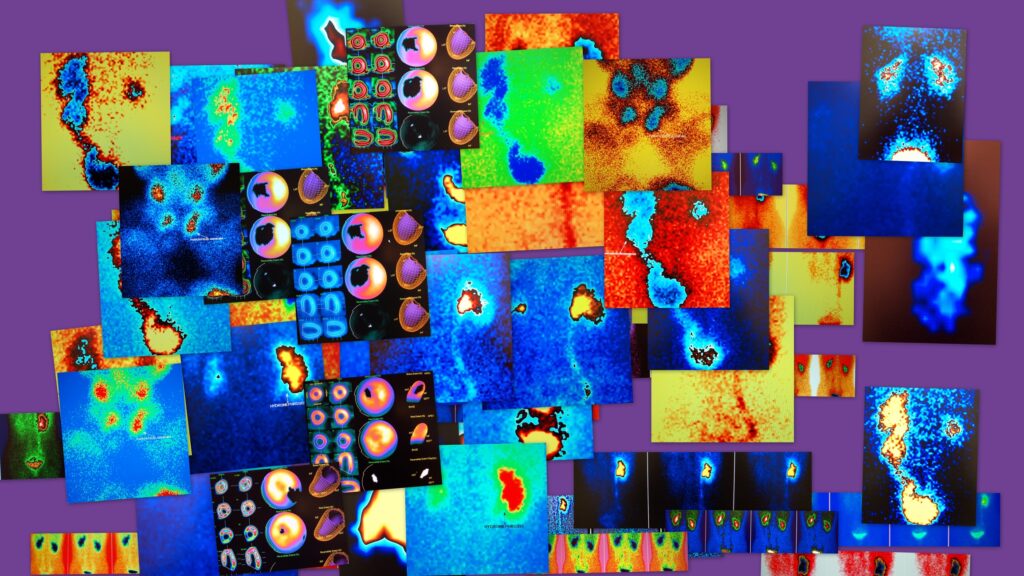Summary: The medical imaging community has witnessed significant advancements in the integration of artificial intelligence, particularly deep learning algorithms. Among these innovations, PACT-3D (Pneumoperitoneum Analysis and Classification Tool – 3D) stands out as a ground-breaking deep learning algorithm designed to detect pneumoperitoneum in abdominal CT scans. This article explores the algorithm’s development, architecture, performance, and implications for clinical practice.
Introduction to Pneumoperitoneum
Pneumoperitoneum, the abnormal presence of air or gas within the peritoneal cavity, often signals a perforated viscus—a condition requiring prompt diagnosis and emergency intervention. CT (computed tomography) imaging has long been the gold standard for detecting pneumoperitoneum due to its high sensitivity and specificity. However, interpreting abdominal CT scans, especially in emergency settings, is time-sensitive and prone to human error.
The emergence of artificial intelligence (AI) and deep learning provides an opportunity to automate and enhance the detection of medical anomalies. PACT-3D, a novel algorithm leveraging 3D convolutional neural networks (3D CNNs), is poised to transform pneumoperitoneum diagnosis, aiding radiologists in making faster and more accurate decisions.
Understanding Pneumoperitoneum and the Need for Automation
Clinical Significance of Pneumoperitoneum
Pneumoperitoneum can result from gastrointestinal perforations, trauma, infections, or surgical procedures. While its presence is not always pathological, undiagnosed or delayed cases can lead to severe morbidity and mortality. Early detection is critical for effective management, whether through conservative measures or surgical intervention.
Challenges in CT Interpretation
Radiologists face several challenges when interpreting abdominal CT scans, such as overlapping structures, subtle signs of free air, and variable patient anatomy. Furthermore, during busy shifts or emergencies, the risk of misdiagnosis increases, potentially delaying treatment.
PACT-3D addresses these challenges by automating the detection process, reducing cognitive load, and minimising diagnostic errors.
Development of PACT-3D
Algorithm Design and Architecture
PACT-3D employs a 3D convolutional neural network (3D CNN), a type of deep learning model tailored for volumetric data. Unlike traditional 2D CNNs, which process images slice by slice, 3D CNNs analyse entire volumes, capturing spatial relationships and contextual information.
Key components of PACT-3D’s architecture include:
- Input Layer: Handles 3D CT volumes, typically formatted as DICOM (Digital Imaging and Communications in Medicine) files.
- Convolutional Layers: Extract spatial features, focusing on patterns associated with free air pockets in the peritoneal cavity.
- Pooling Layers: Reduce computational complexity while preserving critical features.
- Fully Connected Layers: Combine spatial information to generate the final prediction.
- Output Layer: Utilises a binary classification (presence or absence of pneumoperitoneum) or a probability score for clinical use.
PACT-3D is trained on a curated dataset of abdominal CT scans, with ground truth labels provided by expert radiologists.
Data Preprocessing and Augmentation
To ensure robustness and generalisability, the training dataset underwent extensive preprocessing, including:
- Normalisation: Standardising pixel intensity values to account for variations in CT imaging protocols.
- Augmentation: Simulating variations in anatomy, positioning, and air distribution by applying random rotations, translations, and noise.
Performance Evaluation
Metrics for Success
PACT-3D’s performance was evaluated using metrics such as:
- Accuracy: The proportion of correct predictions.
- Sensitivity: The ability to detect true positive cases of pneumoperitoneum.
- Specificity: The ability to exclude false positives.
- F1-Score: A harmonic mean of sensitivity and precision.
Comparative Results
In clinical trials, PACT-3D demonstrated remarkable performance, surpassing traditional machine learning models and even junior radiologists in accuracy and sensitivity. Key findings included:
- A sensitivity of 95%, ensuring minimal false negatives.
- A specificity of 93%, reducing unnecessary alarms.
- A processing time of less than five seconds per scan, enabling real-time application.
Clinical Applications
Augmenting Radiologists
PACT-3D serves as a decision-support tool rather than a replacement for radiologists. By highlighting potential areas of concern, it allows radiologists to focus on complex cases while improving overall diagnostic throughput.
Emergency Settings
In emergency departments, where time is critical, PACT-3D can pre-screen CT scans for pneumoperitoneum, prioritising cases for immediate review. This reduces delays in initiating life-saving interventions.
Integration into PACS
PACT-3D integrates seamlessly with Picture Archiving and Communication Systems (PACS), ensuring minimal disruption to existing workflows. Its user-friendly interface provides visual overlays of detected abnormalities, enhancing interpretability.
Advantages of PACT-3D
Accuracy and Reliability
The high sensitivity and specificity of PACT-3D significantly reduce the likelihood of diagnostic errors, addressing a critical gap in clinical imaging.
Speed
By processing CT scans in seconds, PACT-3D facilitates rapid decision-making, particularly in emergency scenarios.
Cost-Effectiveness
Automating pneumoperitoneum detection reduces the reliance on extensive manual interpretation, potentially lowering healthcare costs associated with delayed or missed diagnoses.
Scalability
PACT-3D’s modular design allows it to be adapted for other conditions and imaging modalities, demonstrating its potential as a scalable AI solution.
Challenges and Limitations
Dataset Bias
The performance of PACT-3D depends on the diversity and quality of its training data. Biases in the dataset, such as underrepresentation of certain demographics, could affect generalisability.
Regulatory Approvals
As a medical device, PACT-3D requires rigorous validation and regulatory approval before widespread deployment, which can be time-consuming.
Clinical Adoption
While AI has shown great promise, some clinicians remain sceptical about its reliability. Educating radiologists and demonstrating the algorithm’s value are essential for fostering trust.
Technical Barriers
Implementing PACT-3D in resource-limited settings may pose challenges due to the need for high-performance computing infrastructure.
Future Directions
Improved Generalisability
Future iterations of PACT-3D aim to incorporate data from diverse populations and imaging settings, ensuring robust performance across clinical environments.
Multitasking Capabilities
PACT-3D could be expanded to detect other abdominal abnormalities, such as abscesses, tumours, or bowel obstructions, enhancing its utility.
Real-Time Collaboration
Integrating PACT-3D with telemedicine platforms could enable remote consultations, providing expert analysis to underserved regions.
Continuous Learning
By incorporating feedback from radiologists, PACT-3D can employ reinforcement learning to improve its accuracy over time.
Ethical Considerations
As with any AI tool, PACT-3D raises ethical questions regarding accountability, data privacy, and potential biases. Developers and healthcare providers must ensure transparency in the algorithm’s decision-making process and prioritise patient safety.
Conclusion
PACT-3D represents a monumental leap in the application of deep learning to medical imaging. By automating the detection of pneumoperitoneum in abdominal CT scans, it has the potential to save lives, reduce healthcare costs, and alleviate the workload of radiologists. While challenges remain, the ongoing evolution of PACT-3D underscores the transformative power of AI in modern medicine.
This innovative tool exemplifies how technology can enhance clinical practice, paving the way for a future where AI and human expertise work hand in hand to improve patient outcomes.
Disclaimer
The content of this article is intended for informational and educational purposes only. PACT-3D: Transforming Pneumoperitoneum Detection in Abdominal CT Scans provides an overview of ongoing research and development in the field of medical imaging and artificial intelligence. The information presented does not constitute medical advice, diagnostic guidance, or professional recommendations.
While efforts have been made to ensure accuracy, the algorithm discussed (PACT-3D) is not a certified medical device and should not be relied upon as a substitute for clinical judgement or consultation with qualified healthcare professionals. Any implementation or clinical use of PACT-3D must comply with local regulatory requirements and undergo appropriate validation.
Open Medscience, the authors, and any associated institutions do not accept liability for any loss, damage, or injury resulting from the use of information or tools described in this publication.
Readers are advised to consult with relevant professionals before acting on any information contained herein.
You are here: home » diagnostic medical imaging blog »



